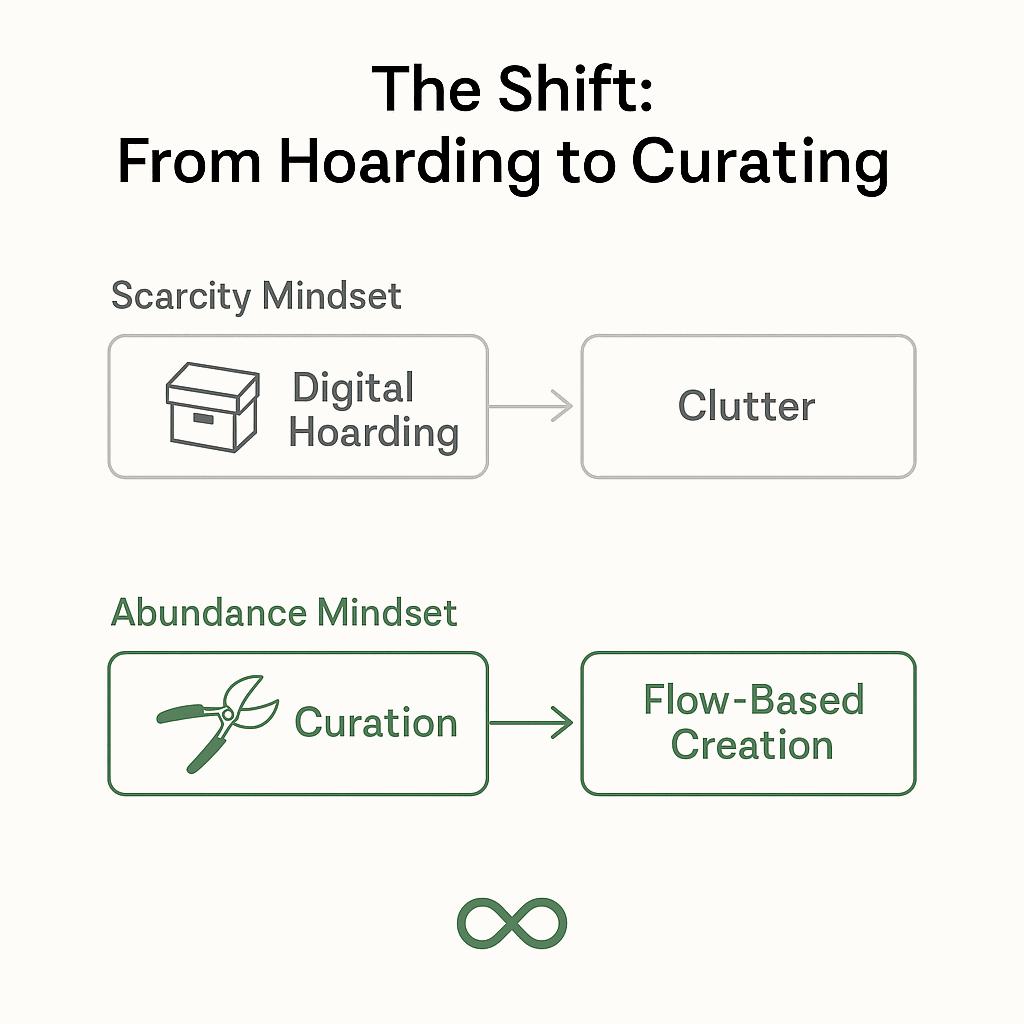From Hoarding to Curating: Thriving in the Age of Infinite Creation

A deep shift is required in how we engage with knowledge. Moving from treating knowledge as a limited resource to seeing it as a dynamic, ever-flowing stream fundamentally changes how we perceive and interact with information. Rather than hoarding knowledge as a fixed asset, we can now view it as a renewable flow, accessible and regenerative as needed.
In the past, every artifact—an image, code snippet, post—was a crystallized unit of effort, because:
- ✅ Cost: It cost time, money, and mental energy to create.
- ✅ Static Tools: The tools were static—Photoshop, IDEs, Word. Once created, an artifact wasn’t easily revised or regenerated.
- ✅ Knowledge Scarcity: Knowledge scarcity forced hoarding: “I might need this later because I can’t easily reproduce it.”
But with LLMs (and generative tools in general), the economics of creation flip:
- 💡 Cheap Creation: Creation becomes cheap and iterative—you can spin up 10 drafts, compare, refine.
- 💡 Storage Shift: Storage is no longer the bottleneck—contextual generation is.
- 💡 Curation: What matters is knowing what to keep, what to let go, and how to recreate on demand.
This means curation > collection.
A few mental models for this shift:
- “Garden not warehouse”: You don’t need to stockpile seeds (artifacts); you cultivate themes and let things grow seasonally.
- “Knowledge liquidity”: Instead of freezing knowledge into static artifacts, keep it liquid in your workflows (prompts, systems, styles).
- “Priceless is worthless”: If everything can be regenerated at near-zero cost, the value shifts to taste (your ability to select and refine).
Practically, this looks like:
- 🗑 Aggressive pruning: Delete mediocre drafts. Only keep artifacts that are unique synthesis or emotionally significant.
- 🗂 Meta-curation: Instead of saving outputs, save prompt patterns, workflows, and principles that got you there.
- 🔁 Fluid recreation: Trust you can recreate 95% of past outputs if needed—faster and better.
- 🧠 Taste-building loop: Focus your energy on improving your sense of quality rather than stockpiling “stuff.”
You’re moving from scarcity-era digital infrastructure (folders, archives, Evernote hoards) to a flow-based creative infrastructure (LLM prompts, style guides, reusable patterns).
🔥 Key question to ask yourself going forward: "If I didn’t save this, how easily could I recreate or improve it? And would I even want to?"